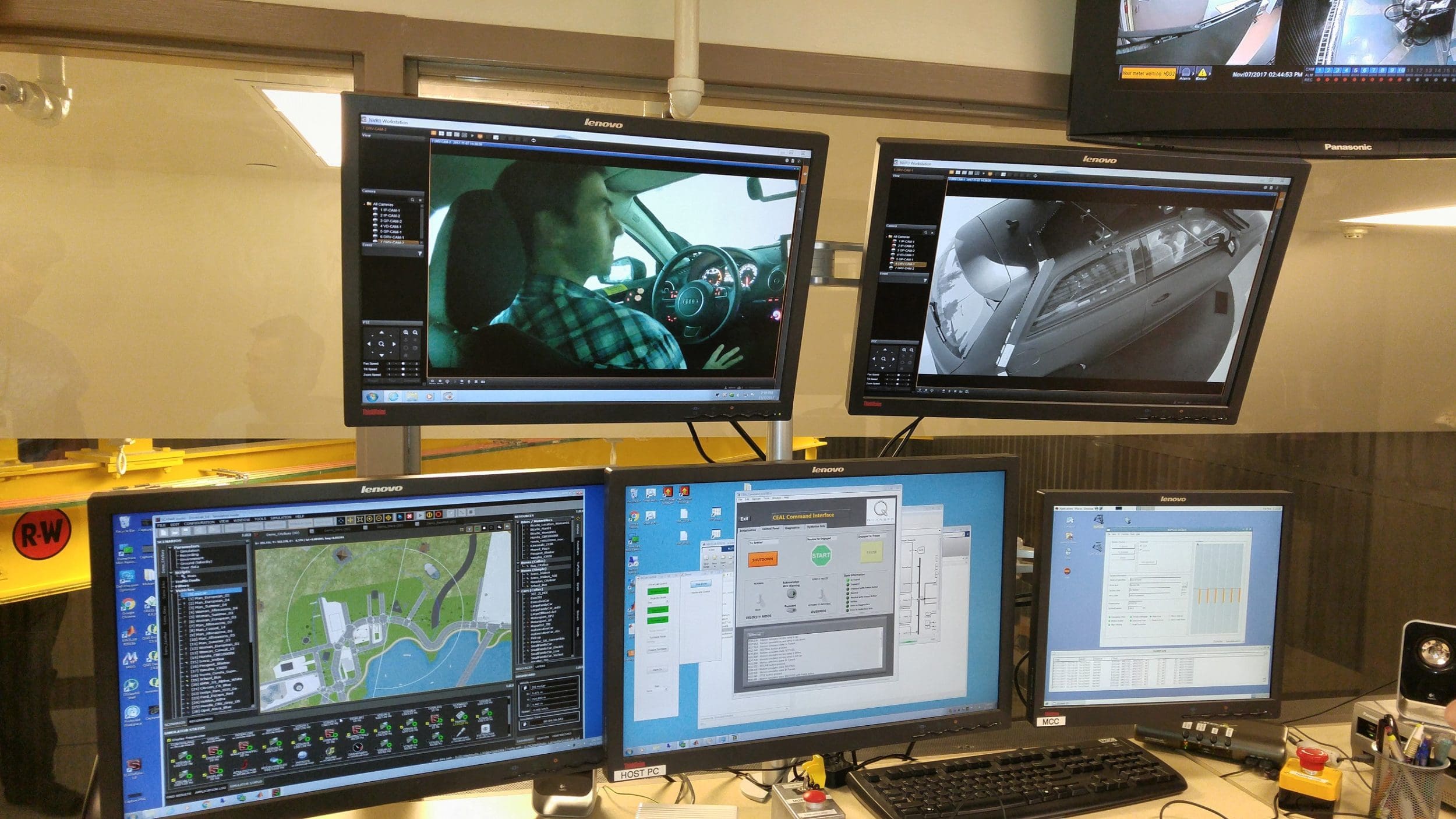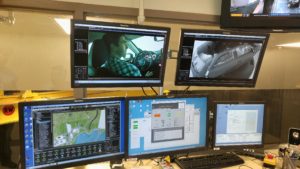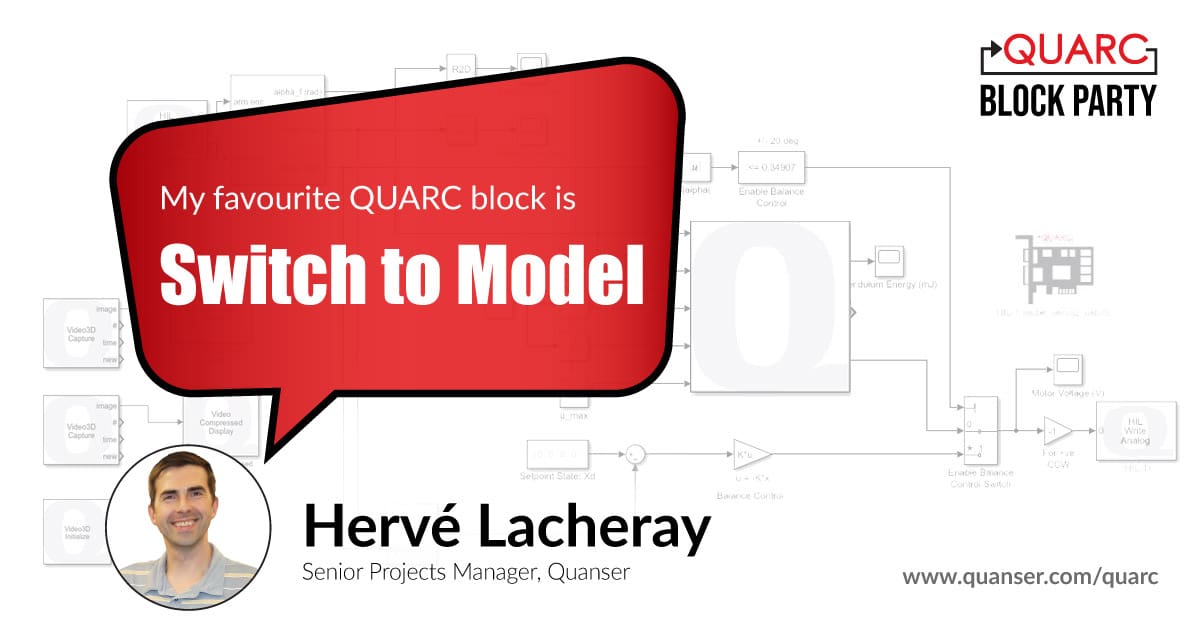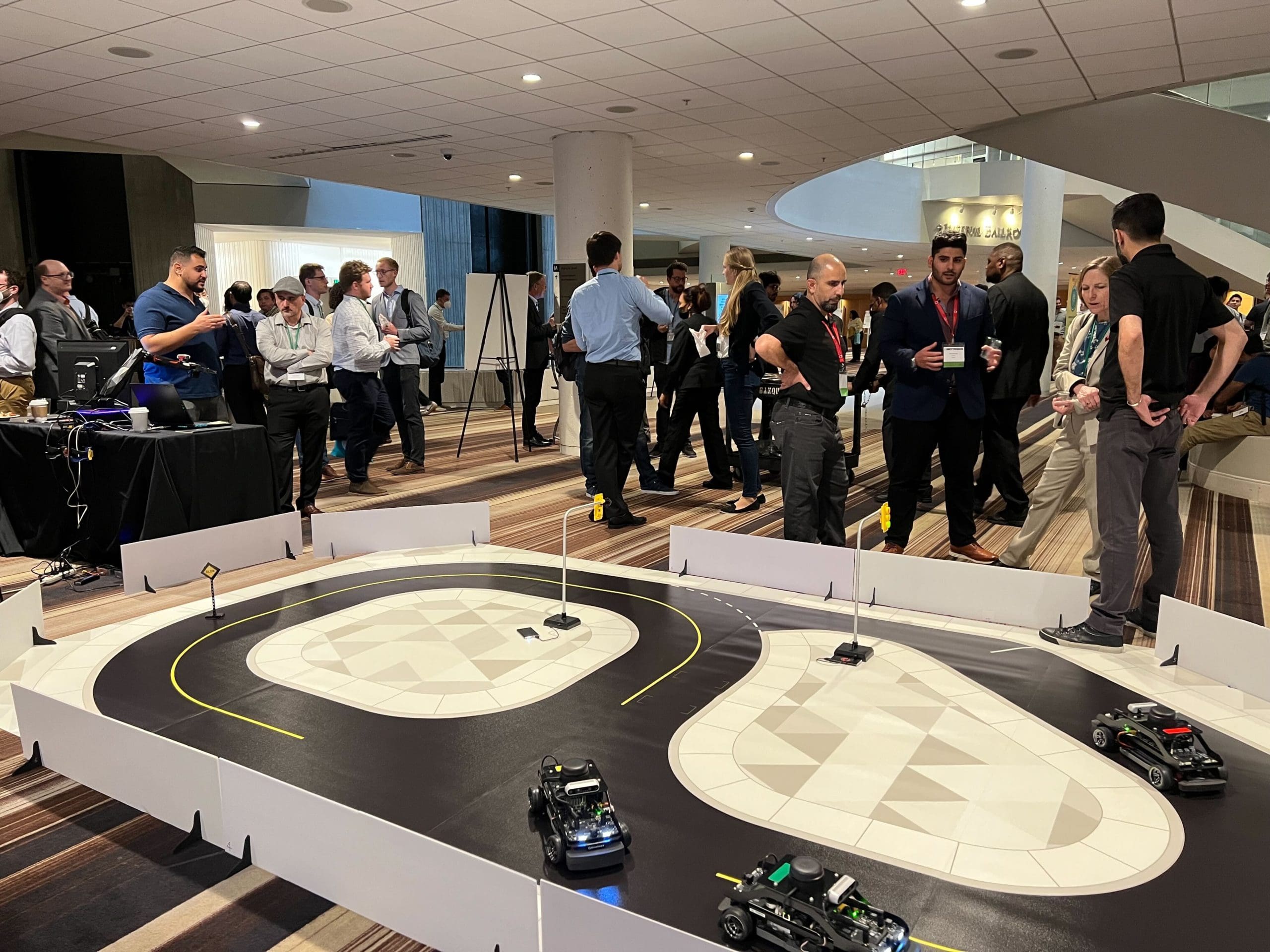
A visit to the Toronto Rehab Institute‘s Challenging Environment Assessment Laboratory (CEAL) is a special treat that comes with working at Quanser. I could hardly resist joining our software group when they decided to drop by and see how TRI’s team put the QUARC real-time control software into action again. This time, as a backbone of the DriverLab, the most advanced driving simulator in Canada.
CEAL, with its set of advanced simulators, gives researchers a unique opportunity to study performance, reactions, and responses of people in environments and situations that would be too dangerous to recreate in a real-world setting. Like falling off the stairs, slipping on the ice, or even driving under the influence of painkillers.
New simulator to test driver performance
The DriverLab is the latest addition to the collection of simulators at CEAL. It features a complete car with all the driver-centric functionality and 360 degrees high-resolution rendering of the surrounding environment. The researchers can also recreate driving conditions, including rain, snow, or a headlight glare of the oncoming vehicle in an extremely realistic manner. The car sits on a turntable, while the whole simulator module is placed on a large 6 DOF hexapod. This makes the driving experience very close to what you would experience in a real car.
While most driving simulators were built to test the vehicles, this one is focused on drivers. The setup will help researchers figure out how aging affects driving skills, how driver’s performance changes under the influence of medications, or lack of sleep, and how drivers interact with the advanced vehicle systems.
When multiple systems need to communicate
From the technical point of view, the DriverLab consists of multiple complex systems that need to communicate with each other: the motion system, car’s dashboard indicators, steering, gear shifting, and braking, rendering of the outside world and the rain and headlight glare systems. Quanser’s QUARC software is the brain that sits on the top of all this. It collects and processes information from the various data sources and sends commands back, making sure all the different devices in the loop are synchronized and the simulator system behaves realistically, consistently, and responds in a real time.
For example, the QUARC DriverLab model receives all the vehicle data – position of the gear shifter, the pressure applied on the gas and brake pedals, and so on. The model then sends the computed motion commands for the 6 DOF hexapod, and the visualization commands for the position of rendered vehicles. In case of the night driving simulation, the model also calculates the position of the oncoming vehicle’s headlights and their intensity. QUARC also records all the data for further offline analysis and processing.
Essential software tool for complex applications

While Quanser was directly involved in the design and software integration of most of the previous CEAL simulator modules, the DriverLab is a result of TRI team’s work. Using standard QUARC features, capabilities, and toolboxes developed by Quanser, the TRI’s team built this new unique application for real-time control of the various hardware devices. Without QUARC, such project would be almost impossible to handle efficiently. It would require months of custom programming, testing, and troubleshooting. All this would possibly limit the number of devices in the loop, and ultimately the scalability and capability of the system.
The DriverLab already acts as a springboard for new research, examining the effect of age on visual-vestibular self-motion perception, or providing more insights for a development of lane departure warning systems. A great example how QUARC can help!




